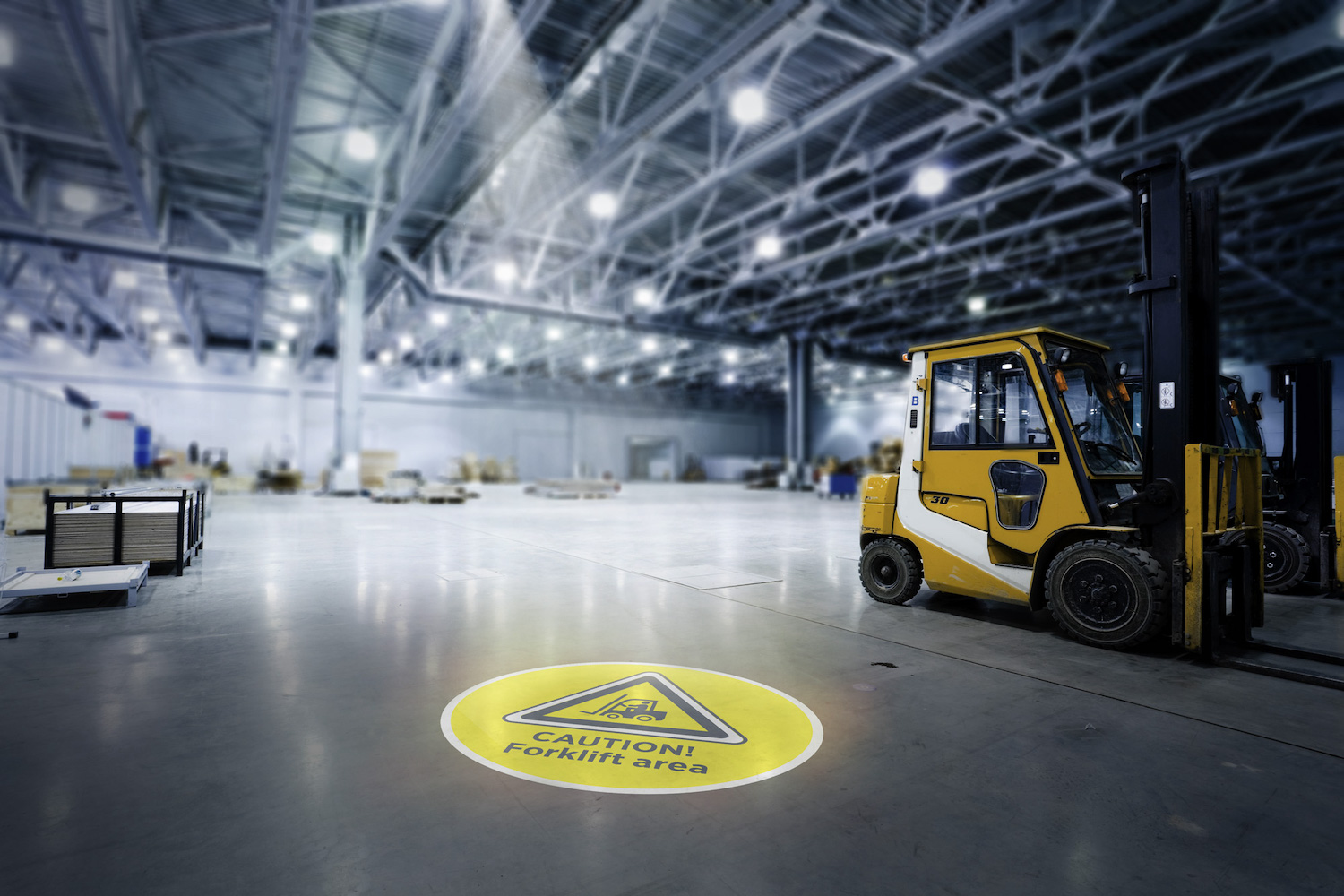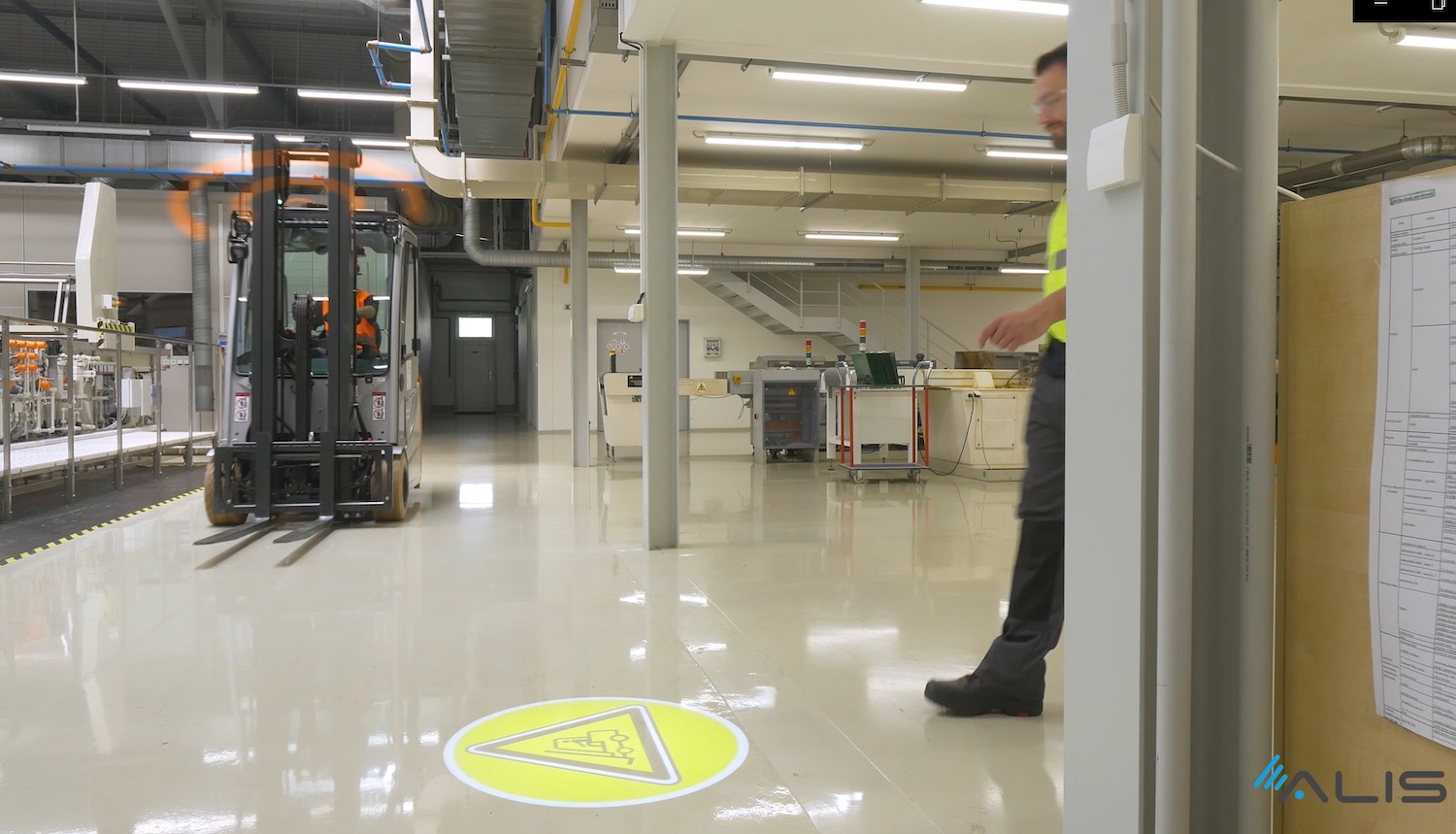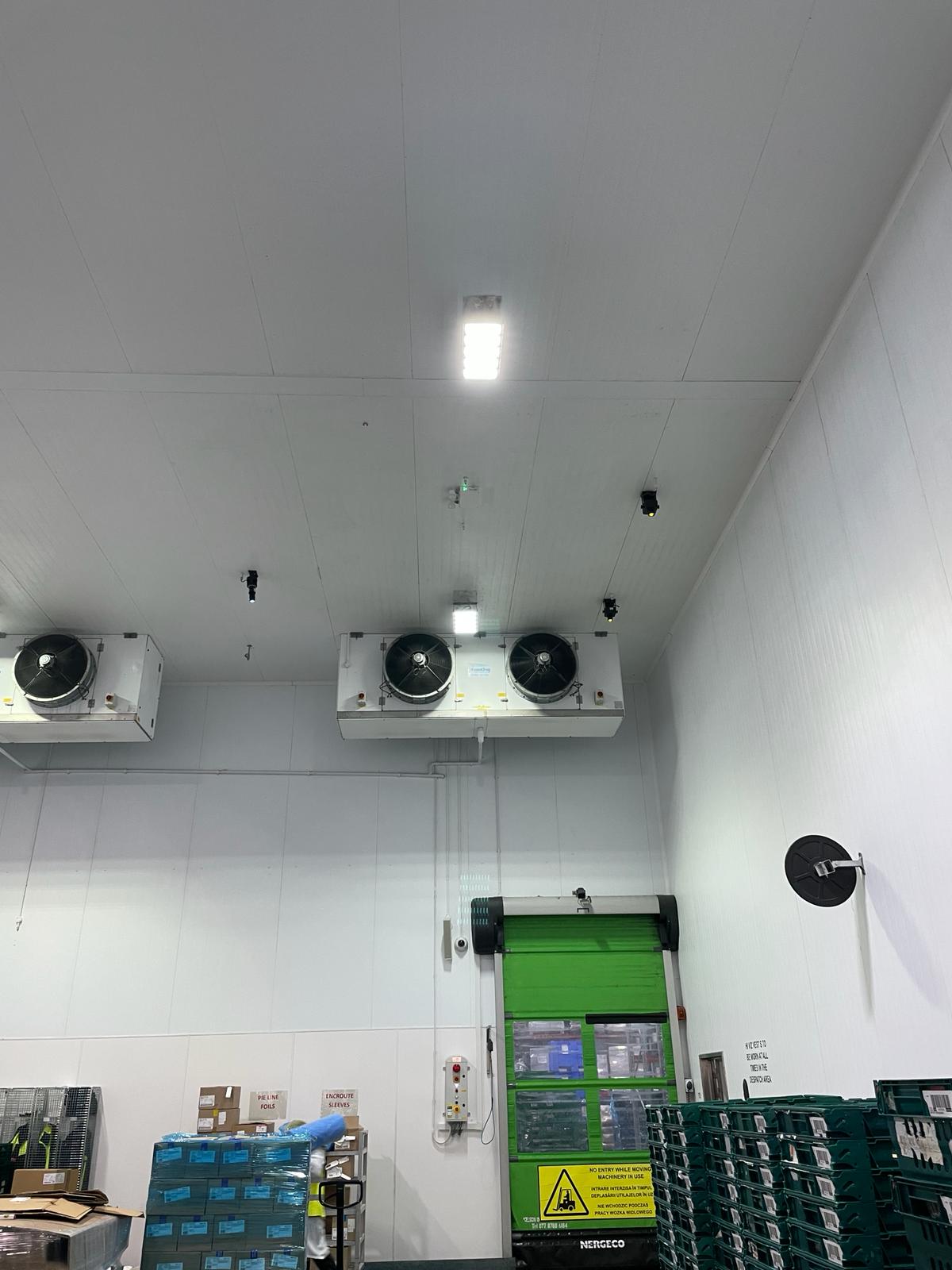Interactive projected floor markings vs paint - whats the difference?
 By
Caleb Shaw
·
3 minute read
By
Caleb Shaw
·
3 minute read
When it comes to guiding people in busy environments like warehouses, hospitals, or shopping centers, the wayfinding strategy you choose can make all the difference. Traditional painted floor markings have long been a staple for directing foot traffic. However, with advancements in technology and design, interactive projected floor markings are emerging as an innovative alternative that captures attention more effectively.
LED projections not only convey essential information but also enhance safety and engagement. But what exactly sets these two methods apart? Let’s dive into the advantages of each and explore how they impact our ability to navigate our surroundings efficiently while keeping safety at the forefront.
Advantages of using paint
Painted floor markings have been a reliable choice for many years. Their simplicity and low initial cost make them attractive for various applications. A quick coat of durable paint can create clear paths in factories, parking lots, or retail spaces.
One major advantage is their permanence. Once applied, painted markings can withstand heavy foot traffic and harsh weather conditions without fading quickly. They require minimal maintenance compared to other options.
Another benefit is the ease of customisation. Different colors and designs can be used to convey specific messages or direct people efficiently through complex environments.
Additionally, they are often easy to apply in-house with basic equipment. This means organisations can implement updates swiftly without relying on specialised technology or external contractors. The straightforward nature of paint makes it an accessible solution for many businesses looking to enhance navigation within their spaces.
Advantages of using projected floor markings
Projected floor markings bring a fresh approach to guiding and informing individuals in various environments. They are dynamic, easily customisable, and can adapt to different events or conditions without the need for extensive labour.
Projected floor markings can interact with FLT's, People, doors and even machinery. For example, where there is a change in PPE requirements - some customers simply have the projected floor marking to indicate this
These markings stand out with vibrant colours and moving images that capture attention quickly. Their interactive nature engages users, making navigation intuitive and seamless. This is particularly beneficial in bustling spaces like airports or shopping centres where clarity is key.
Moreover, projected floor markings can be updated and even transported to a new location if your warehouse layout changes. There's no need for physical alterations or lengthy downtime associated with traditional paint applications.
Safety also improves significantly as these indicators adjust based on real-time situations, helping prevent accidents effectively. Engaging visuals not only enhance awareness but also create an inviting atmosphere wherever they are utilised.
What is sign blindness?
Sign blindness refers to a phenomenon where individuals fail to notice signs or markings in their environment. This often happens in busy spaces like airports, shopping malls, or warehouses filled with distractions.
When the mind is bombarded with information, visual cues can easily be overlooked. People may walk right past painted floor markings without registering their importance. The issue lies not just in visibility but also in human behavior and attention spans.
This oversight can lead to safety risks and operational inefficiencies. When critical directions are missed, it creates confusion and potential hazards for everyone involved.
Understanding sign blindness is crucial for designing effective navigation systems that catch attention rather than fade into the background noise of daily life.
Why do painted floors cause sign blindness
Painted floor markings are often overlooked. Their static nature can create a sense of familiarity that leads to complacency among individuals navigating the space.
When people frequent an area with painted signs, their brains start to ignore them. This phenomenon is known as sign blindness. It occurs because our minds prioritize new or dynamic stimuli over repetitive ones.
Moreover, faded paint or wear and tear diminishes visibility. When signage becomes less clear, it further complicates navigation and safety.
In high-traffic environments, distractions abound. Bright colors and flashing lights from screens pull attention away from static markings on the ground. The result? Important information goes unnoticed during critical moments when clarity is essential for safety.
Without engaging visuals, it's easy for pedestrians to miss crucial guidance provided by painted floors.
What makes interactive projected signage the safest option
Interactive projected signage, such as Clarity LED projected floor markings, presents a modern and effective alternative to traditional paint. One of the most significant benefits is its adaptability. Unlike painted floors, which are permanent and can fade or wear over time, interactive projections can be easily updated or changed according to specific needs or events.
This technology enhances visibility by using dynamic visuals that capture attention effectively. Since these markings are not just static images but can also adjust based on real-time data or user interaction, they significantly reduce the chances of sign blindness—a common issue with conventional signage.
Moreover, interactive projected signage offers a much higher level of safety. The bright LED lights ensure that important information stands out in various lighting conditions. This makes it hard for anyone to miss critical directions or warnings in environments where hazards might exist.
By combining visual engagement with flexibility and enhanced safety features, interactive projected floor markings emerge as an intelligent solution for any space looking to improve navigation and awareness while maintaining aesthetic appeal. The shift towards this innovative approach reflects a growing understanding of how we process information in our surroundings—making it not only smarter but safer for everyone involved.





